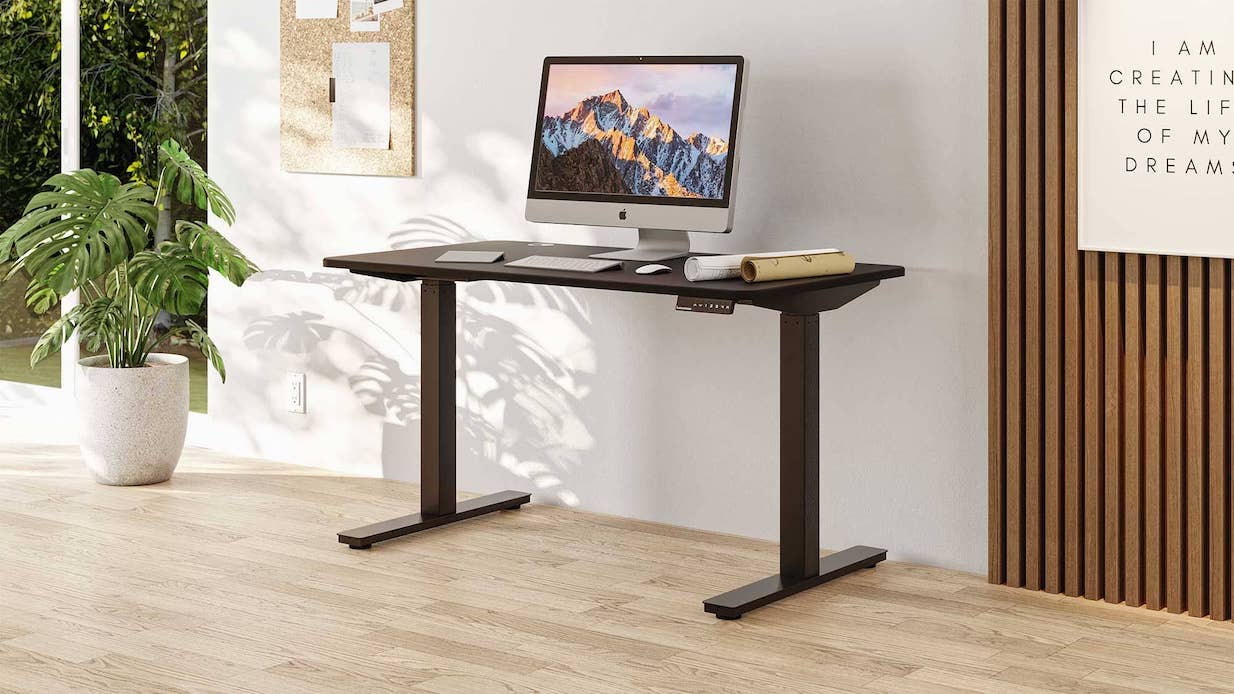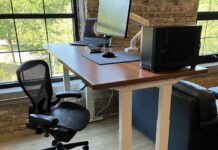With which are you better off, standing or sitting at work? It’s hard to pick one right there and then because we don’t just want to go with the flow. They say standing is the best option and that everyone should do the switch. But you bought that expensive Aeron and Steelcase Leap for a reason, right? Let’s take a deeper look into it.
Standingdesktopper's pick
Is sitting that bad
Apart from standing desks, ergonomic office chairs are also becoming more and more popular. These chairs promise to provide a better seating solution. It also promises to help you keep a good posture despite being seated for the entire day. So with the popularity of these products, it makes sitting not at all that bad right? So can sitting be still okay provided that you’re using an appropriate ergonomic chair?
Let’s sink into it deeper.
Sitting nevertheless is bad for you if you’re going to sit for the next 8 hours. But standing for the next 7-8 hours straight can also be bad for you. Some jobs require people to stand straight for more than 8 hours. Say, salespeople and personnel. And some of them also complain of feeling tired for the entire day. And many have been complaining of leg and foot pain. And if you have plantar fasciitis, you will not be able to tolerate standing straight, especially on cement floors, for more than 4 hours.
Sitting has been demonized. But we have to take everything with a grain of salt. It’s just the same with proper nutrition. Carbs have been demonized all along. But what people do not know is that the bad carbs are simple carbs or sugar. And our body still needs a specific amount of carbs. This will help you sustain your daily activities. Remove this from your diet and you’ll feel sluggish and weak.
The same is true with sitting. Sitting per se isn’t evil. It is bad if you will sit for the entire day and do not stand or even move at all. Prolonged sitting can be bad indeed for your heart, that we agree. Well yes, because your body is designed to move, sitting or even standing still and not moving at all is both bad for you. You have to move.
With that, here are several things that you have to do to be able to incorporate standing and moving within the day. You do not have to ditch your expensive Herman Miller Aeron haha. These simple steps will make you less at risk of the negative effects of a sedentary lifestyle.
How to add micro-movements while seated
- Try to stand up every twenty minutes
Standing up, walking, and moving every twenty minutes can do wonders for your health. If you tend to forget, then go ahead and include that in your alarm notification.
Small movements, walking, and stretching can help prevent fat from blocking your bloodstream. It will all help keep you more happy and alert.
- Set up stations
Companies can set up workstations and designate employees on each station at a time. So when one employee is done in station 1, he has to stand up, move and walk to the next station. This may seem work, but that is what we are trying to make you do, move and work.
- Try to incorporate simple exercises
Yes, you can still toss in mini movements even when seated. And this can also help prevent the fat from blocking your veins and arteries. Simple movements like stretching can also help keep the body moving. Toe touches and even squats can be great mini exercises between work.
Is standing for the entire day really healthier?
Standing and staying stationary at the same time does not provide many benefits. As we have mentioned above, your body also has to move. So you also have to add mini movements while you’re standing. Simple actions such as jumping jacks, squats, and stretching are easier done when you are standing already. You might even go about it unnoticed.
The thing is, standing for the entire day and not moving at all, can also be bad for you. and it can be painful. And this pain is not the type of pain that will easily go away. Especially if you have foot issues or even have DVT, it might not be a good idea to stand for the entire day.
And forcing sedentary people to use a standing desk right away can be counterproductive. It can also be bad for them. There has to be a break-in period. You can’t just break the habit of sitting for the entire day and not expect any pain. Like any intervention, it has to be done gradually. When you decide to transition into a standing desk and have been sedentary your entire life, it’s wise to take it slow.
When done right, sooner or later, you’ll be sitting less. But keep in mind that micro-movements are also more important than standing alone.
Also, there is such a thing as proper alignment and posture even when standing. Using an expensive desk but not setting it up right can also lead to neck and back pains. That’s why you also have to ensure that you are using your standing desk properly, it has to be in the proper alignment with your body. Head on to our next section next to find out how
Proper body alignment when using a standing desk
As mentioned, not setting up a standing desk properly can also cause nagging pain, so even if you are using an expensive and premium sit-stand desk, you can still develop a bad back. And here are some things to consider when using a standing desk.
- Check the table height
Set the table height so that it rests slightly above the elbows or at your elbows’ height. Setting it too low or too high can put a strain on your shoulders. And this pain can radiate to your upper back and neck.
A desk that’s set too high may cause your shoulder to hunch up. A desk set too low can put a lot of strain on your shoulders. Also, ensure that your elbows are at a 90-degree angle to the keyboard.
- Monitors should be at a right distance from the eyes
You have to set the monitors so that it is 20-28 inches away from your eyes. It will be even more beneficial if it has a 20-degree tilt. If you are too far away from the monitor, you tend to pull your neck towards the monitor. And this can be painful at the end of the day. That neck pain can also travel to the back and shoulder. Sooner or later, you’ll find that your entire back is aching too.
And you should also be looking down on the monitor, not up. Otherwise, you will also put a strain on your neck.
If you are using a laptop, this might be difficult to achieve. That’s why it is also advisable to use a desk riser or desk converter to achieve the optimum position.
So is standing the lesser evil than sitting?
Technically yes. Because it is way easier to incorporate movement if you’re already standing. A simple stretch can be done unobtrusively. You can even do a squat and no one will notice. If you are seated, you have to make an effort to stand up, walk, and move but a bit away from your chair. And not all are inclined to do that.
That’s why it can be hard for a sitter to add mini movements, though it is still possible. But sometimes, they can be made fun of. That’s why it also has to be a team effort. We need to involve everyone and have several minutes a day where all are required to move, bounce or hop around.
If your space will be able to accommodate that, why not? That could mean healthier employees and a more fun work culture. And try to avoid making fun of sitters who are trying to incorporate mini movements in their day. For all you know, it took them all the guts they had just to do that.
The thing is, everyone should be involved. It has to be a team effort. Why? Because everyone wants to be healthy and happy.
- Top 27 Best Height Adjustable Electric Standing Desks for Home office Setup (All budget options from under $500 to around $1000)
- Top 22 Most Comfortable Office Chairs For Long Hours of Sitting – Good for both Working, Gaming and Relaxing
Final thought
To summarize, both sitting and standing still for the entire day can have negative effects on your body. Sitting for the entire day can cause fat to clog and block your arteries and veins. It can also lead to a bad posture and nagging back pain.
Standing still for the entire day, on the other hand, can also have negative effects on your body. It can result in lasting pain, especially if you are not used to it. And there are also conditions wherein prolonged standing is not recommended, such as plantar fasciitis and DVT.
Here is where you should strike a balance. A balance between standing and sitting for the entire day is the ideal solution. And adding micro-movements while seated or standing can also be beneficial.
It’s still important to stand once in a while. Especially if you tend to slouch while you sit. Standing for several times a day can help improve your posture and prevent your back from sinking too deep in that comfy office chair.



































